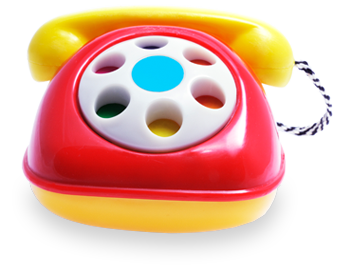What Is Frequently Used To Repair Atrial And Ventricular Septal Defects In Pediatric Patients?
Atrial Septal Defects and Ventricular Septal Defects
Call for an AppointmentAtrial septal defects (ASDs) and ventricular septal defects (VSDs) are holes in the walls between the heart's upper or lower chambers. At Duke, the top-ranked program in North Carolina for pediatric heart care and heart surgery, our pediatric heart experts work to ensure your child's septal defect is closed at the right time and with the least-invasive methods possible so your child can thrive.
Find an Atrial Septal Defects and Ventricular Septal Defects Doctor
Please check your filter options and try again.
About Septal Defects
Atrial and ventricular septal defects are common congenital heart defects, meaning they are present at birth, and their cause is unknown. Left unchecked, large ASDs and VSDs allow oxygen-rich and oxygen-poor blood to mix, which can lead to dangerously high pressure in the heart and lungs and reduced oxygen to the body.
Since the ventricles (the lower chambers of the heart) are responsible for the pumping action of the heart, VSDs are under a lot of pressure and usually need to be repaired within a child's first year of life. There is less pressure in the atria (the upper chambers of the heart), so ASDs may not need to be repaired right away but usually before a child's fifth birthday.
Our Locations
Duke Health offers locations throughout the Triangle. Find one near you.
Testing
Septal defects are typically discovered after birth when your child's doctor notices a heart murmur during a routine exam. Other common symptoms in infants include shortness of breath, sweating or tiredness while feeding, and poor weight gain. However, ASDs and VSDs can go unnoticed for decades.
If a septal defect is suspected, your child will be referred to a pediatric cardiologist for additional testing -- usually an echocardiogram. This specialized ultrasound shows the structure and function of your child's heart and can help doctors identify the location and size of the hole and how much blood is flowing through it.

Treatments
Small septal defects might never cause a problem, and some may close on their own. For these children, doctors may recommend periodic follow-up appointments and imaging to make sure the hole doesn't worsen. Children with larger septal defects will likely need surgery.
Medication
Medications can be used temporarily to help strengthen the heart, lower blood pressure, and flush out excess fluid, but they cannot repair atrial or ventricular septal defects.
Minimally Invasive Procedures
Catheterization procedures and plug-like devices are ideal options for many children with ASDs. While a child is sedated under general anesthesia, a doctor inserts a thin, flexible tube into an artery in the groin and threads it through the circulatory system to the heart. Then, small tools and devices can be passed through the catheter to patch or plug the hole.
If an ASD is an unusual position or if there are other complications, the catheter technique cannot be used to repair an ASD.
Pulmonary Artery Banding
This operation helps relieve symptoms and high pressure in the lungs temporarily by narrowing the pulmonary artery, which reduces blood flow to the lungs. Eventually, the band will need to be removed and the VSD fixed with open heart surgery.
Heart Surgery
For VSDs and more complicated ASDs, open-heart surgery may be necessary. Sometimes surgeons can make incisions in inconspicuous places (for example, in the breast crease) and between bones (in the lower sternum or between ribs) to reduce scarring and speed recovery. During the surgery, a patch -- either a natural patch taken from the child's own heart lining or an artificial patch -- is sewn over the hole to close it permanently. Some defects may be sewn closed without a patch.
Why Choose Duke
Minimally Invasive Options
Compared with traditional surgery, less-invasive catheterization procedures leave smaller scars and speed recovery, so your child can get back to growing and learning faster. Choosing a center with a high-quality pediatric heart program like Duke's means your child could be eligible for procedures that may not be available elsewhere.
Recognized for Excellence
Duke Children's Hospital is verified as a Level I Children's Surgery Center by the American College of Surgeons. This Level I designation recognizes our commitment to providing the safest and highest-quality surgical care to our young patients.
Specialized Intensive Care
Our Pediatric Cardiac Intensive Care Unit (PCICU) is one of only two in the state. The unit is staffed by physicians with specific training in critical and heart care. Our Neonatal Intensive Care Unit (NICU) has a Level IV designation, indicating we provide the highest level of care for critically ill infants.
Support Services
Our family-centered care includes support groups, wellness programs, and education for siblings to help them understand what is happening to their brother or sister. We have a Ronald McDonald House Family Room that offers amenities to make your family's stay as comfortable as possible.
#1 in NC for Pediatric Cardiology and Heart Surgery
Duke is the best pediatric cardiology and pediatric heart surgery program in North Carolina, according to US News & World Report.
Reviewed: 07/15/2020
What Is Frequently Used To Repair Atrial And Ventricular Septal Defects In Pediatric Patients?
Source: https://www.dukehealth.org/pediatric-treatments/septal-defects
Posted by: fowlerthavest.blogspot.com

0 Response to "What Is Frequently Used To Repair Atrial And Ventricular Septal Defects In Pediatric Patients?"
Post a Comment